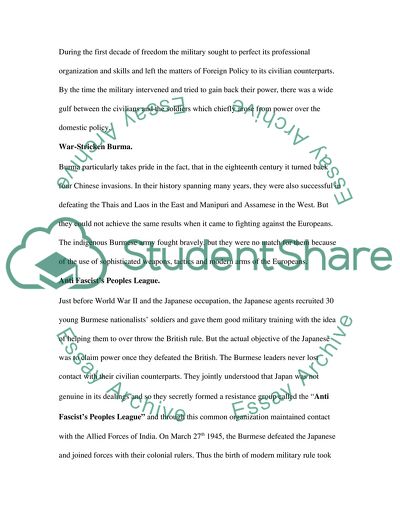Cite this document
(Burma: Military Rule in the 1990s Essay Example | Topics and Well Written Essays - 1500 words, n.d.)
Burma: Military Rule in the 1990s Essay Example | Topics and Well Written Essays - 1500 words. https://studentshare.org/politics/1707379-what-are-the-main-achievement-and-failures-of-the-military-rule-in-burma-in-the-1990s
Burma: Military Rule in the 1990s Essay Example | Topics and Well Written Essays - 1500 words. https://studentshare.org/politics/1707379-what-are-the-main-achievement-and-failures-of-the-military-rule-in-burma-in-the-1990s
(Burma: Military Rule in the 1990s Essay Example | Topics and Well Written Essays - 1500 Words)
Burma: Military Rule in the 1990s Essay Example | Topics and Well Written Essays - 1500 Words. https://studentshare.org/politics/1707379-what-are-the-main-achievement-and-failures-of-the-military-rule-in-burma-in-the-1990s.
Burma: Military Rule in the 1990s Essay Example | Topics and Well Written Essays - 1500 Words. https://studentshare.org/politics/1707379-what-are-the-main-achievement-and-failures-of-the-military-rule-in-burma-in-the-1990s.
“Burma: Military Rule in the 1990s Essay Example | Topics and Well Written Essays - 1500 Words”. https://studentshare.org/politics/1707379-what-are-the-main-achievement-and-failures-of-the-military-rule-in-burma-in-the-1990s.


